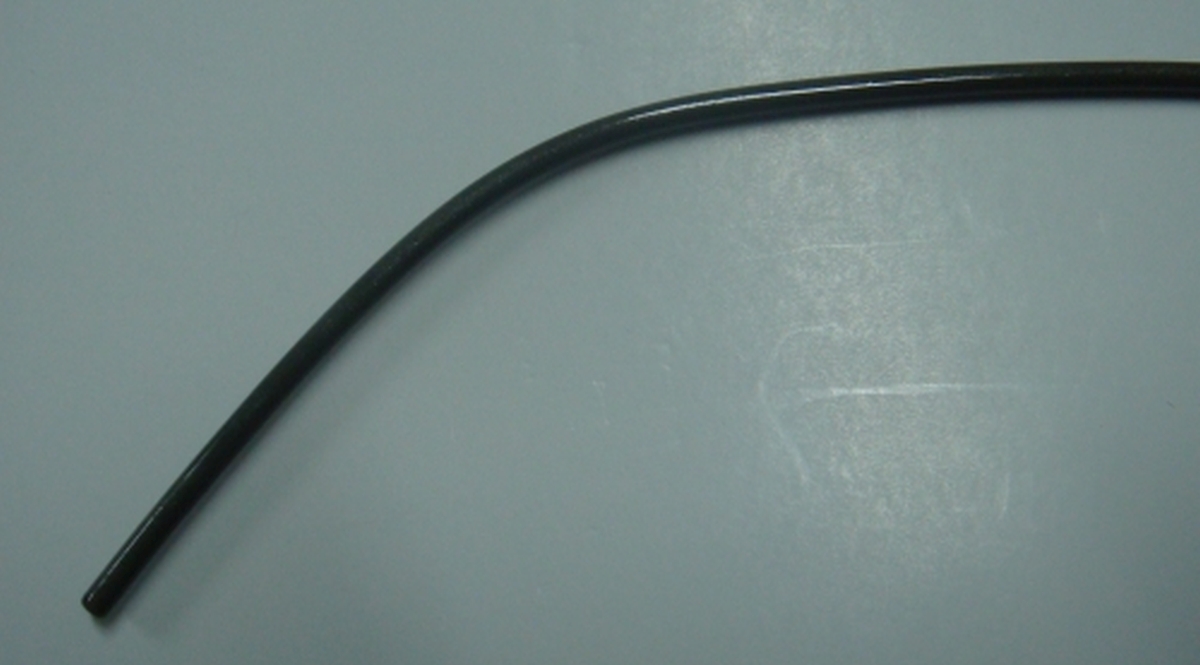Cournand catheter
Cournand catheter

Cournand catheter is a right heart diagnostic catheter named after the Nobel laureate André Cournand. It has an end hole and no side holes. Hence it is suitable for pulmonary artery wedge pressure measurements and blood sampling. Being a single hole catheter, it can easily get blocked and needs frequent flushing, especially in those with thrombotic tendency like congenital cyanotic heart disease. Cournand catheter is made of woven dacron and has a polyurethane covering. It has a very gradual distal curve and a tapered tip.
André Cournand and his coworker Dickinson Richards were awarded a Nobel Prize in 1956 along with German physician Werner Forssmann, for their pioneering work on cardiac catheterization [1]. Prior to the design of dedicated cardiac catheters, André Cournand and Dickinson Richards were using ureteral catheters with a single end hole for right heart catheterization to measure cardiac output [2].
Cournand catheter has also been used for 5-Fluorouracil treatment of liver metastases by continuous hepatic artery infusion [3]. Pulmonary artery rupture is a rare complication of right heart catherization which can be fatal. Successful emergency embolization of a ruptured pulmonary artery caused by Cournand catheter has been reported [4]. It was a high risk patient with pulmonary hypertension on oral anticoagulation. Gelatine foam was used for embolization.
Cournand catheter is used during closure of patent ductus arteriosus (PDA) to cross the ductus initially [5]. The Cournand catheter is passed from the pulmonary artery through the ductus into the descending aorta till its distal end is below the diaphragm. An exchange length guidewire for the PDA closure procedure is then introduced through the Cournand catheter and the catheter removed.
References
- Braunwald E. André Cournand, Bellevue’s Cardiopulmonary Laboratory, and Research on Heart Failure. Ann Am Thorac Soc. 2018 Feb;15(Suppl 1):S12-S14.
- Cournand A, Riley RL, Breed ES, Baldwin ED, Richards DW, Lester MS, Jones M. Measurement Of Cardiac Output In Man Using The Technique Of Catheterization Of The Right Auricle Or Ventricle. J Clin Invest. 1945 Jan;24(1):106-16.
- Brennan MJ, Talley RW, Drake EH, Vaitkevicius VK, Poznanski AK, Brush BE. 5-Fluorouracil Treatment Of Liver Metastases By Continuous Hepatic Artery Infusion Via Cournand Catheter: Results And Suitability For Intensive Postsurgical Adjuvant Chemotherapy. Ann Surg. 1963 Sep;158(3):405-19.
- Kaiser CA, Hügli RW, Haegeli LM, Pfisterer ME. Selective embolization of a pulmonary artery rupture caused by a Cournand catheter. Catheter Cardiovasc Interv. 2004 Mar;61(3):317-9.
- Dugal JS, Jetley V, Sharma JK, Singh C, Mehta M, Sabharwa JS, Sofat S, Bharadwaj P. Techniques in Cardiology : PDA Closure in Children. Med J Armed Forces India. 2005 Jan;61(1):63-5.


